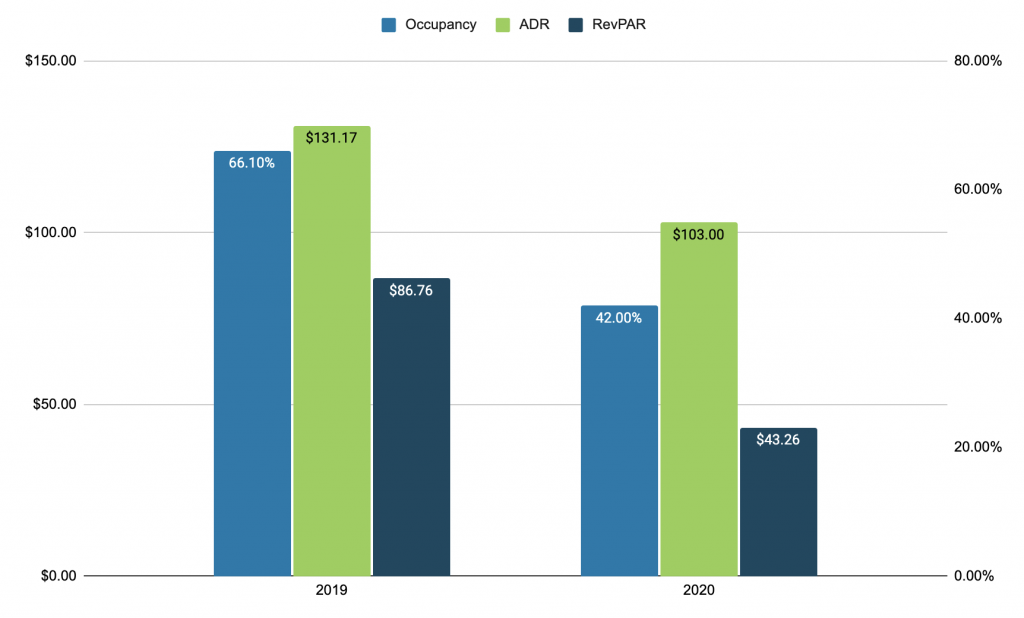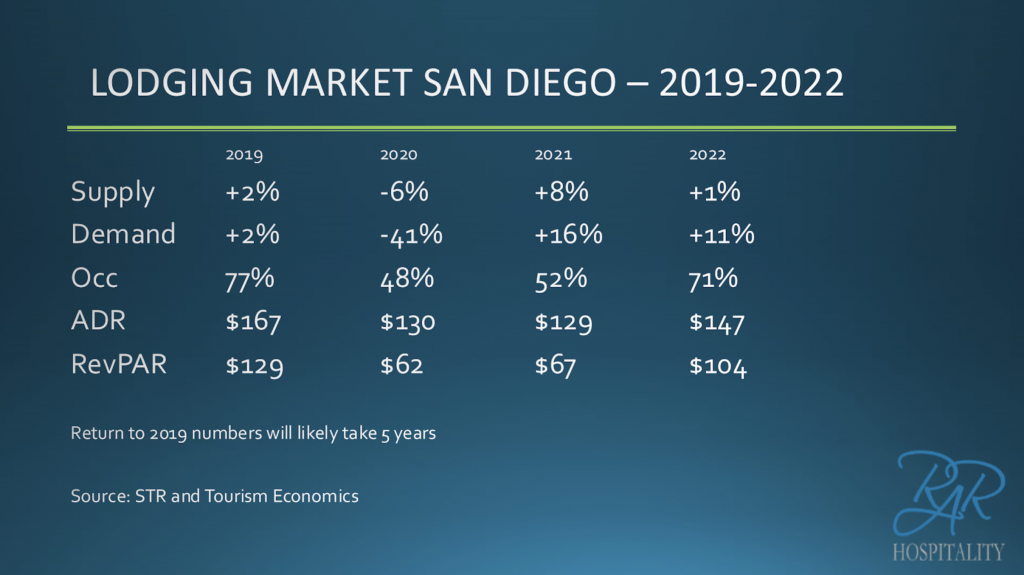By Robert Rauch
The Recovery Year For Hotels
The final U.S. lodging industry numbers for 2020 came out and RevPAR literally finished at half of where it finished in 2019—that’s right, half! Occupancy was 66.1% at $131.17 average rate and RevPAR of $86.76. 2020 finished at 42% at a rate of $103.00, RevPAR was $43.26. The impact to the bottom line is easy to see in our bank accounts as breakeven has always been thought to be close to 60% occupancy but many forget the importance of rate to that equation.
Travel Demand
How and when do we recover? The when is certainly up for debate but most pundits are focused on 2023 or 2024. The how is to understand where customers are coming from—not geographically, but through what system. While geography is critical for targeting, these guests are found on websites that track customers showing interest in travel.
Google has debuted new tools to help destinations and hotels use search data to identify and analyze travel demand. These tools are Destination Insights and Hotel Insights, and are available to any business, including non-advertisers, on the Travel Insights with Google. The website is aimed at helping the sector better understand the pent-up demand and leverage insights from key data led tools for businesses to position themselves for recovery. These trends will be based on user search data on the tech company’s search engine.
Another area of interest might be vaccinations – those who receive them may travel sooner—I know I will! Healthcare workers will be ready for a break later this year and the 65+ set has been ready for almost a year! Keep in mind that despite the dire forecasts, if you are in a market where leisure travel is desirable and we vaccinate 1 million per day, 50% of citizens will be vaccinated by summer.
Building Your Online Presence For Marketing
Today’s digital marketing must include a robust approach to Instagram, Facebook and any social media where we can get the word out about our business. Instagram has a feature called Guides that might fit for certain hotels and destinations.
Your marketing efforts should focus on your niche, what sets you apart, how you can be there for your guests, and promotions to excite your guests to complete your direct booking. Here are a few tips to keep your online presence strong.
- Keep your website up to date. This means photos, promotions, cleaning protocols, etc.
- Add fresh content to please the search engines. Blogs are a great way to do this.
- Speak to your guests to be relatable. Social media and review sites such as TripAdvisor should be your go-to for public-facing communication.
Average Rates & OTA Relationships
When talking about what kind of occupancy and average rate we will see in 2021, there are conservative approaches due to current pandemic restrictions and more forward-thinking and aggressive forecasts that assume pent-up demand by summer of 2021. Either way, consumers will likely be price-conscious.
That doesn’t mean we can’t drive rates during peak periods but remember how many hotel rooms are coming back on the market from being closed and opening new and how many short-term rentals are on the market. It’s going to be a little while before we can just raise our prices to 2019 levels.
Many travelers have less money and less job security, and are changing the way they shop for travel, so use caution when raising rates this winter. Be a revenue management/rate leader if you have a strong asset but remember to include short-term rental data (easily obtained from AirDNA) as well as all channels. Many of us have a love/hate relationship with OTAs. Try some love as the OTAs have strong marketing budgets and are very smart about where they spend those dollars.
We might look at some of Google’s programs like Pay Per Stay as you do not pay unless the guest stays along with travel intent data, part of the aforementioned Travel Insights with Google platform. In that we are based in San Diego, we looked at San Diego’s forecast from Tourism Economics and it doesn’t look rosy:
I am an eternal optimist who thinks that if the U.S. is at 50% occupancy and San Diego is normally 10 points higher, San Diego will hit 60% this year. But California has crippling government mandates and having any hopes up for group or corporate business might prove irresponsible. The bottom line is to preserve cash as if the virus stays and do everything in your power to drive demand. Best of luck in 2021!
In case you missed Vision 2050 – 1st Edition, check it out here!



